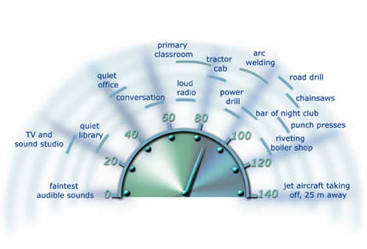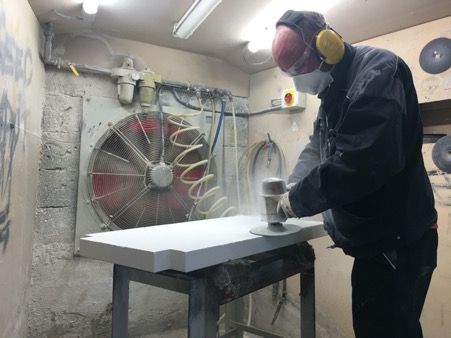The Control of Noise At Work
Noise is a very common workplace hazard. It is one of the key occupational health injuries that occupational hygiene aims to control.
Over one million people in Britain are exposed to occupational noise levels that put their hearing at risk.
The health effects of noise at work
Depending on the noise level and duration of exposure it can cause a range of effects from annoyance, loss of concentration and sleep disturbance to noise damage that is permanent and disabling. According a 2008/9 Labour Force Survey about 170,000 people suffer deafness caused by excessive noise exposure.
Hearing loss is not the only problem. People may develop tinnitus (ringing, whistling, buzzing or humming in the ears), a distressing condition which can lead to disturbed sleep.
Noise at work can also interfere with communication and make warnings harder to hear. It can also reduce people’s awareness of their surroundings. These issues can lead to safety risks – putting people at risk of injury or death.
In 2019 two rail workers who died in Wales after being hit by a passenger train were wearing ear defenders and may not have heard it coming.
What does the law require?
The Control of Noise at Work (CNAW) Regulations require you to eliminate or reduce the risks to health and safety from noise.
They apply where work activities expose people at work (employees or other workers affected by your work activities) to risks to their health and safety from noise.
The regulations contain three risk predictors:
- Peak sound pressure level.
- Daily noise exposure level.
- Weekly noise exposure level.
Depending on the level of risk identified, you should take action to eliminate or reduce the noise exposure and make sure the legal limits are not exceeded.
The Noise Regulations define ‘exposure action values’ which are levels of noise exposure which if exceeded require you to take specific action.
There are also legal limits on the levels of noise to which workers may be exposed.
To comply with the exposure limits you must ensure that workers noise exposure (taking into account any hearing protection warn) is not above:
87 decibels for daily exposure; and
140 decibels for peak sound pressure
Health surveillance may also be recommended.
Any action taken should be reasonably practicable ie in proportion to the risk.
How do I know if I have a noise problem at work?
This will depend on how loud the noise is and how long people are exposed to it.
As a simple guide you probably need to do something if any of the following apply:
- Do you have to raise voices to carry out a normal conversation when about 2m apart?
- Do staff use noisy power tools or machinery for more than 30 minutes per day?
- Are there noises due to impacts eg hammering or pneumatic impact tools or explosive sources eg cartridge operated tools or guns?
- Do you work in a known noisy industry eg construction, demolition, woodworking, engineering, plastics processing etc
Some examples of typical noise levels are shown in the graphic below.

(Source HSE website)
Undertaking a noise at work assessment
The aim of a noise at work assessment is to determine operator exposure for the purposes of assessing control
Our trained and competent hygienists can assist you and help formulate a monitoring plan and guide you through the steps to compliance.
The objectives of the survey will typically be to:
- To undertake a representative number of personal samples from similarly exposed groups (SEG’s).
- To undertake static samples using a sound level meter (SLM) to help identify potential sources of exposure and to determine effectiveness of control measures.
- To assess compliance with the limits, as required by CNAW regulations;
- To provide recommendations on improving existing or additional control measures
- Provide Information to support a risk assessment;
- Provide an initial priority assessment including timescale for re-testing.

Request a Consultation
Get in touch
The first stage is to, either give us a call on 0191 378 2164 or fill out the contact us form and we’ll get back in touch to discuss your requirements.
We will then arrange a visit to your site, or if we have sufficient information, we’ll put a clear proposal together for you, with no hidden costs.
All being well our competent consultants will then visit site to undertake the work and produce a comprehensive report, reviewing your control measures with concise recommendations.
We operate throughout the UK and Worldwide.






